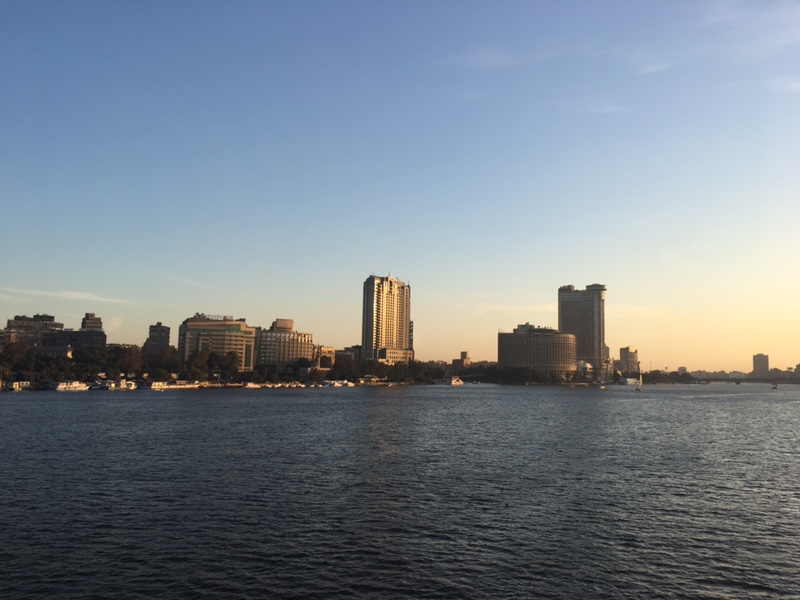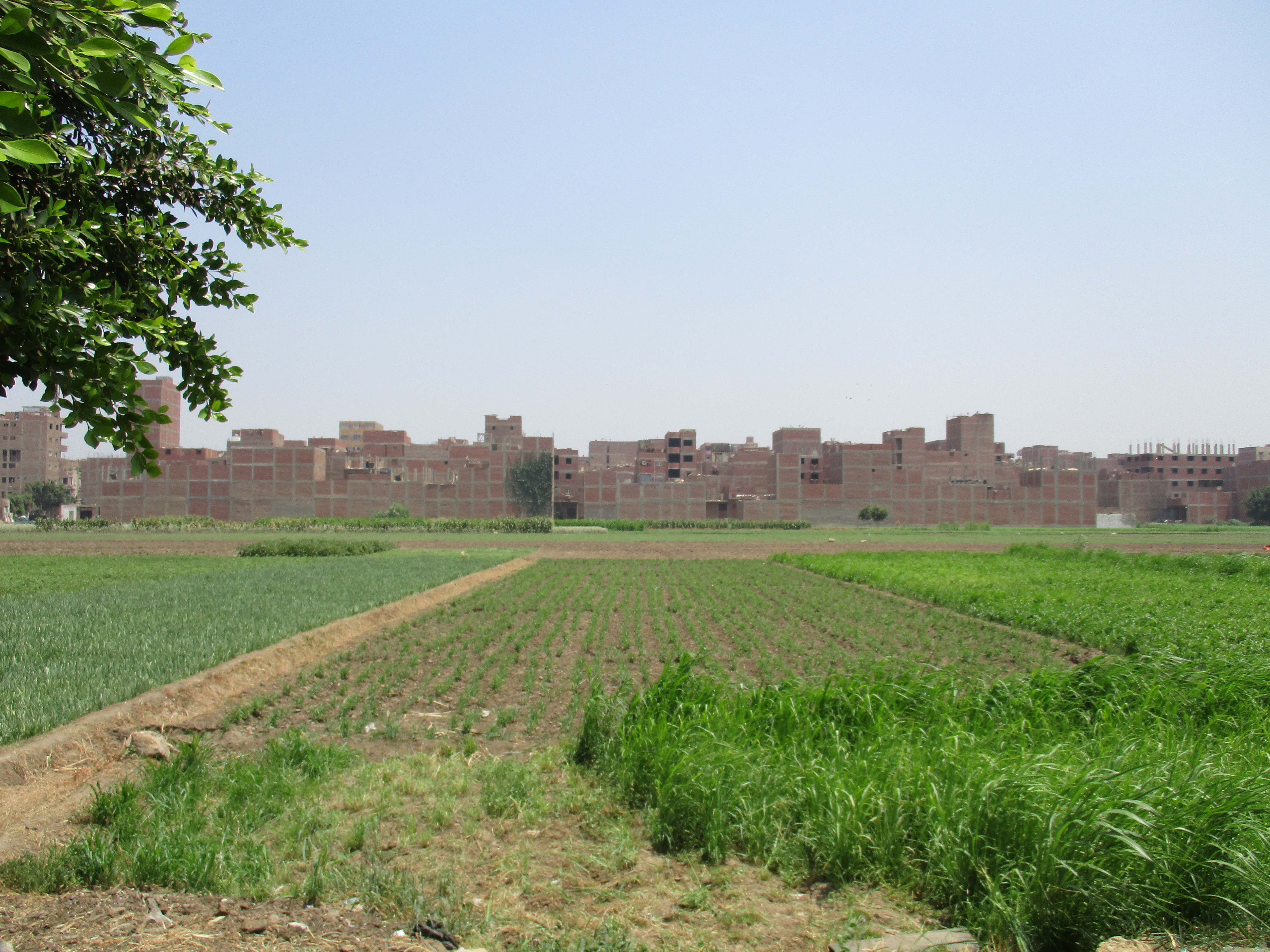
It's the last hour of the last fast of Ramadan. But fatigue isn't stopping people from rushing to get onto one of the last boats across the Nile before iftar, when Muslims break their fast. Trying to catch up with his young mother, a boy who looks about two years old trips in a small cloud of dust on the ramp.
"This one's not going! Take it easy, it's not going!" yells Ashraf, who has been working here for the past 40 years, since he was six years old. Another person tries to rush on and pay only half of the 1 Egyptian pound ($0.05) fare.
"There's no power but with God," he says, exasperated.
Despite how stressful the scene is, the ferry is definitely a time-and money-saver. A ride on al-Gawhara ("The Essence") cuts 50 minutes and 4 pounds off a 10-pound microbus trip that normally takes an hour. When traffic is heavy, it can take twice as long.
On board the ferry, Ibrahim al-Tawam, 22, and Mohamed Gamal, 20, are exhausted. They've come a long way in the July heat at the close of a workday before they break their fasts. When the boat finally arrives in Giza, the part of greater Cairo on the west bank of the Nile, tuk-tuks are gathered, ready to putter off into the Mounib neighborhood.
Like most cities in Egypt, Cairo is built around the Nile. But the country's greatest natural highway is also underutilized, with far less traffic than the river could support. The government says roads transport 95 percent of Egypt's goods and people.
"The vibe is much better than commuter transit," says Ayman Fathy, a 28-year-old cleaner on his way to his work with a colleague, of the ferry ride. "It's beautiful, as sweet as honey. The microbus is uncomfortable and disgusting."
Microbuses aren't really disgusting — but their habitat, Cairo's congested highways and bridges, is. A World Bank study estimated that pollution from congestion costs Egypt as much as $8 billion every year.
Most transportation needs in Egypt run longitudinally: that is, south to north or north to south. Egypt's few Nile ferries do the opposite, replacing bridge crossings rather than bypassing traffic on streets parallel to the river. The most predictable and cheapest way to travel north to south in Cairo is the crammed metro.
The Essence looks like it was retrofitted into a ferry rather than built as one. Its motor is loud, but not long after it has left the dock, the sounds of traffic fade away. The northerly winds means that the air is cool and clear, rather than the southerly winds that bring in dust, sand, and heat from Sudan. We pass the tail end of Qorsaya, one of Cairo's five main islands. Reeds line the approach to the dock in Mounib.
As I speak with Fathy, a man eavesdrops. I introduce myself, and he takes off into a rant. "There should be more of these [ferries], but there's no brains, no planning, no nothing," he says. There is a plan for more ferries, I say. "That talk is old and won't happen," he says. By this time we've reached the dock and he walks off before giving his name.
We're on the bottom deck, under verses from the Quran handpainted in wispy calligraphy. There are other religious sayings that double as advisories: "Cleanliness comes from belief." On this evening, the bottom deck has two bikes, large plastic bags full of goods, and a man sitting on a running motorcycle. The ship's captain is yelling over its engine noise into his cell phone while driving the boat. He waves me away when I try to talk to him, and I catch myself tripping over chain that runs from both sides of the bridge to the rudder.
The Nile is dangerous for even strong swimmers, so when boats go down, people often go with them. Days after I rode The Essence, four Pakistani tourists died when their sailboat hit a bridge piling. When a motor-powered pleasure boat sunk in the Nile last year, 37 died.
Nobody I talk to on the ferry has reservations about its safety, and nobody wears life jackets that are supposedly required by law. On a recent photo-op broadcast on television, the head of the Nile Transport Authority, a former general named Reda Ismail, got into a discussion that bordered on an argument with one of the ship owners over safety.
"The lifejackets are there," the owner said. "If anything happens, we'll tell them to put them on." Later, Ismail told me that boats are regularly inspected for safety and for following procedures, but that there are rarely life jackets in sight. At the dock near The Essence before I boarded it, a rowboat tied to the back of one ferry had "lifeboat" handpainted on its side, but it could probably only carry eight people comfortably.
Ismail says there are about 130 ferries all over Egypt, and estimates that 75 percent of them are for passenger traffic. Much of the ferry traffic is in the Nile Delta. For context, Cairo has eight Nile bridges, depending on how you count, and there are 16 more south to Aswan.
The Egyptian government says it needs $1.9 billion in investment for 3,000 miles of new roads, and existing roads currently cost over 6 billion pounds (about $325 million) a year to maintain. With cash short on hand, it only needs to look to the Nile for a cheaper option, and prepare updated and safety regulations and enforcement plans while they're at it.



